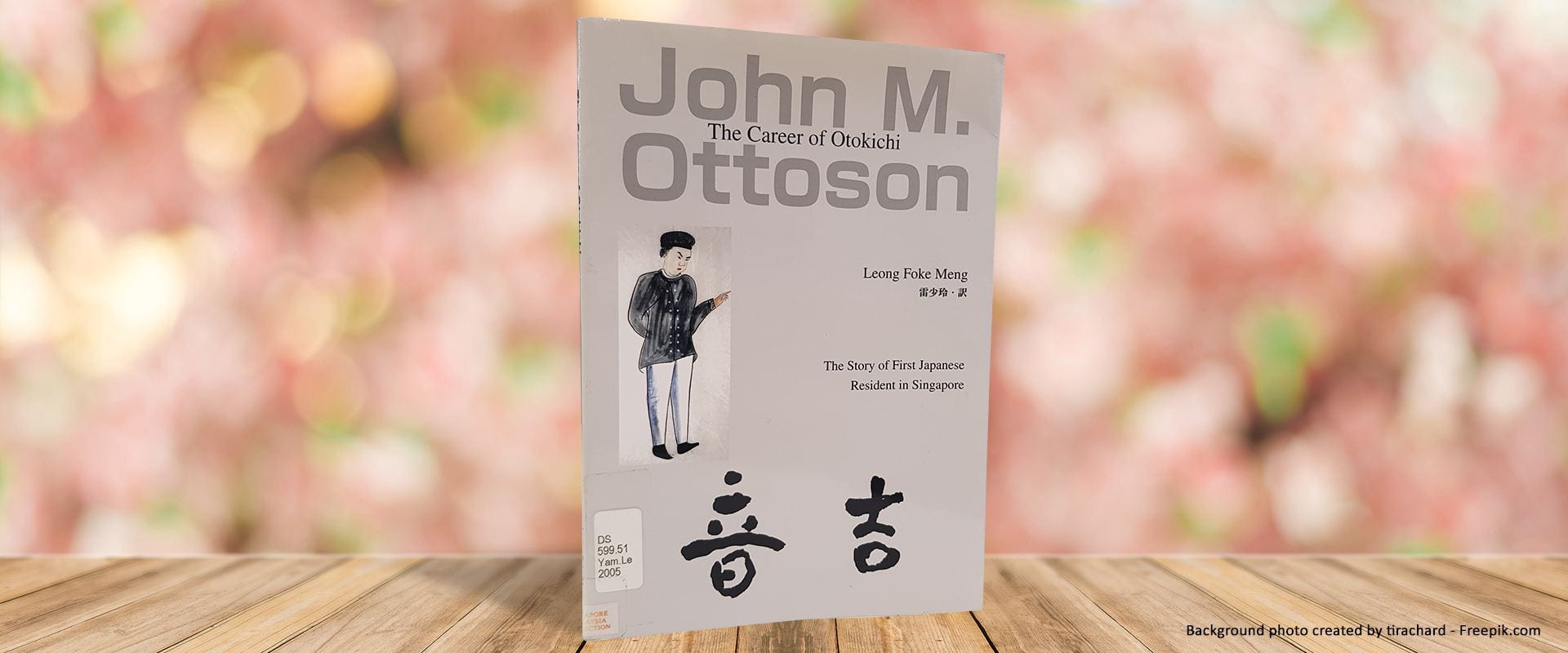It is easy to see why the author Leong Foke Meng, of the Singapore Land Authority, was inspired to write the book, The Career of Otokichi. Otokichi Yamamoto (1817- 1867) was an amazing man who led an eventful life. He was recognised as the first Japanese resident in Singapore. He was also instrumental in opening relations between Japan and the West during the late Edo period (1603–1867).
Also, Mayor Koichi Saito, mayor of Mihama Town in Japan saw it fit to write a message to grace the book.
The work written in English and Japanese, is a well-researched book with a 5-page reference. In the preface, Leong acknowledged he had help from many people, including people from National University of Singapore, like historian Ernest Chew Chin Tiong (retired) and Principal Librarian, Tim Yap Fuan.
The book focuses on Otokichi Yamamoto’s stay in Singapore from the late 1840s to his death in 1867, as well as on the activities of his family members after he had passed on.
Otokichi’s family hailed from Mihama (Aichi prefecture). By the time he was 15, he was as an apprentice sailor on board the ship Honju-maru. In 1832, the ship with a crew of 14, set off to sail from Owari to Tokyo only to run into a typhoon. The wrecked ship ended up beached on the north western coast of America with Otokichi and two others. The three are believed to be the first Japanese to land in North America.
They were captured by the Makah, a native American tribe, but later put into the hands of a British trader, McLoughlin, who sent them to London hoping to use the men as an opportunity to trade with Japan. In June 1835, they reached London where they became the first Japanese to set foot in England.
Otokichi and his friends moved to Macau where they came under the care of German missionary Karl Friederick August Gützlaff (Charles Gutzalff). They were credited with helping Gützlaff translate parts of the Bible, the gospels of John and Matthew into Japanese. These were published in Singapore in 1837.
Joined by four more shipwrecked Japanese sailors, another attempt was made to get the men home. However, the ship they were on was met with hostile gunfire when it arrived in Japan in 1837 and was forced to turn back.
Otokichi became a Christian and took on the name of John Matthew Ottoson. In the 1840s, he worked in Shanghai for a British trading firm, Dent & Company. He learnt Chinese and adopted a Chinese name, Lin-A-Tao. He used that name when he was based at HMS Mariner which was docked in Uraga, Japan. He was concerned that Japanese officials would find a Japanese Christian working for a foreign government offensive. He felt being mistaken for a Chinese was safer for him. In 1852, he helped Rear-Admiral James Stirling forge the Anglo-Japanese Friendship Treaty which opened Nagasaki for trade between Britain and Japan. He was rewarded with British citizenship and received a small fortune.
Otokichi married a Scottish woman who bore him a daughter, Emily Louise. Both his wife and child died within about four years. No record was found of the lady’s name. He remarried – this time to Louisa Belder, a Singapore-born Eurasian of German and Malay descent. They had met in Shanghai. The couple had two daughters, Ida, and Julia, and a son, John William.
In February 1862, he met the famous moderniser of Japan, Yukichi Fukuzawa, who was passing through Singapore. He was one of the interpreters for the delegation led by feudal lords, Takenouchi Shimotsuke-No-Kami, Matsudaira Iwai-No-Kami and Kyogoku-Noto-No-Kami. Fukuzawa asked about Otokichi’s work in Shanghai and how he dealt with the British and Americans.
Otokichi lived on Queen Street when he first came to Singapore before purchasing a large house on Orchard Road. The site of his house was then a large nutmeg and clove plantation. Records show that he was likely a trader in agricultural products in the 1860s. In December 1864, Otokichi became a naturalised British citizen in Singapore. Soon after, the family went on an extended trip of several months to Europe, returning in March 1865. Otokichi spent his last days at Arthur Seat, a sanatorium in Siglap owned by Robert Little, before he died of tuberculosis on 18 January 1867. Being a Presbyterian, Otokichi was buried at the Bukit Timah Christian cemetery, but his remains were later moved to the Choa Chu Kang Christian Cemetery. In 2004, his remains were exhumed and cremated, and his ashes placed in a charnel at the Japanese Cemetery off Yio Chu Kang Road. Representatives from his hometown led by Mayor Saito took some of the ashes back to Japan in February 2005.
The intrepid boy sailor finally went home after 173 years.


